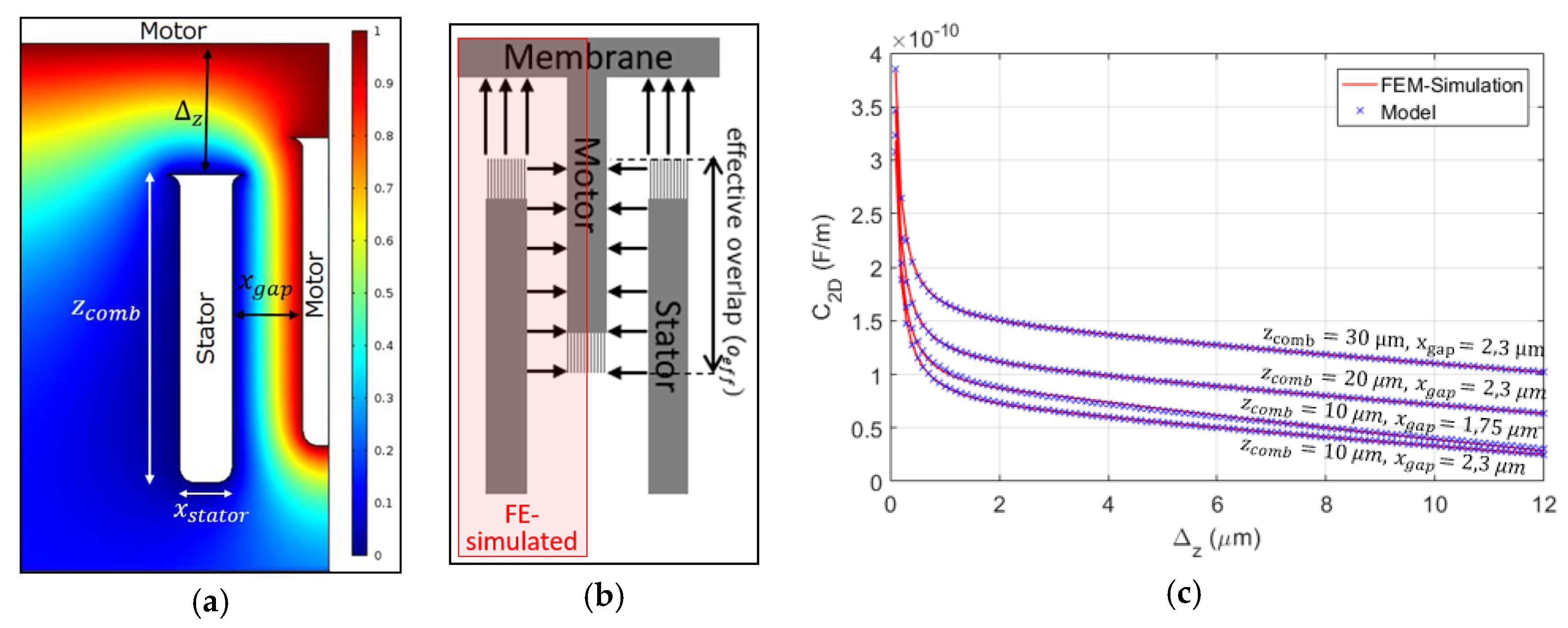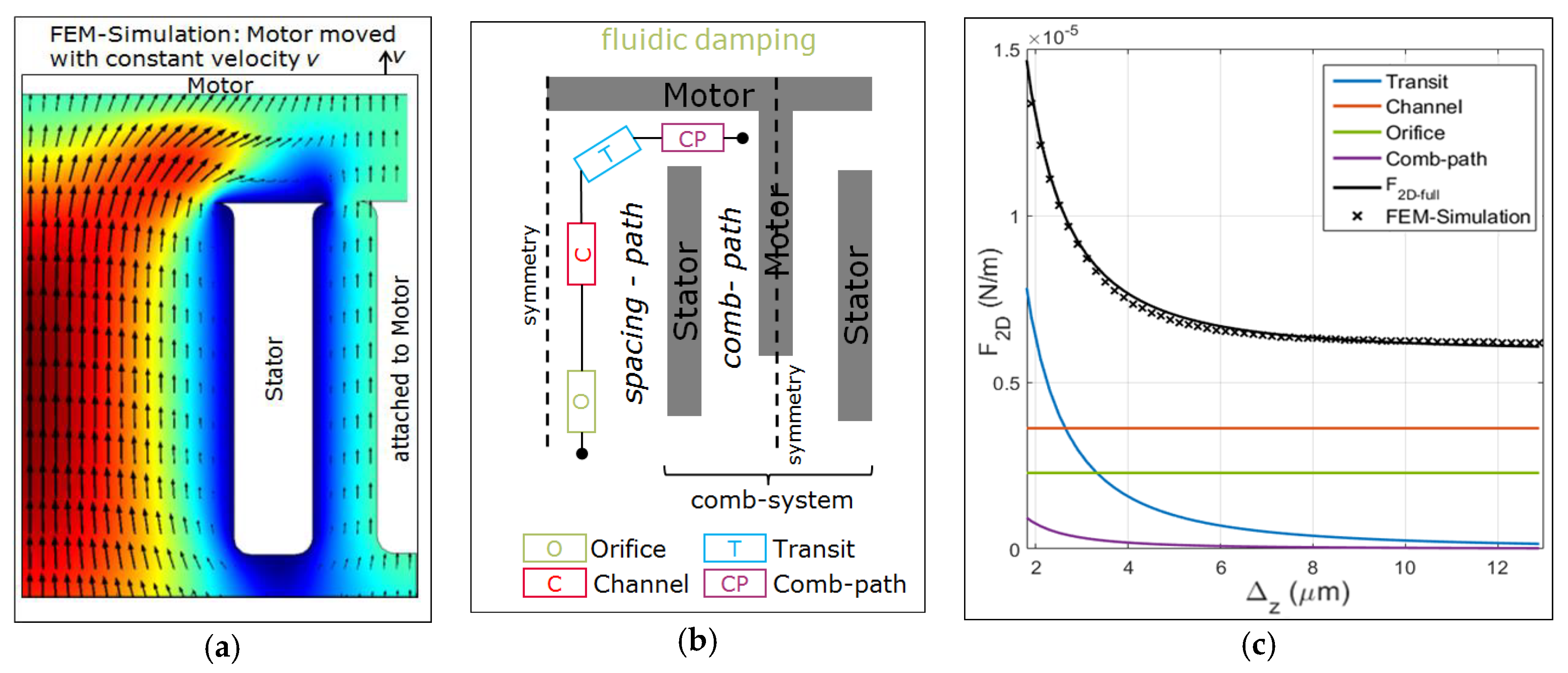A Comb-Based Capacitive MEMS Microphone with High Signal-to-Noise Ratio: Modeling and Noise-Level Analysis †
Abstract
:1. Motivation and Description of Device Concept
2. Physics-Based Modeling of Electrostatic Force and Fluidic Damping
2.1. Capacitive Transducer Model
2.2. Fluidic Damping Model
2.3. Verification of the System-Level Model
3. Noise and SNR
4. Conclusions
Acknowledgments
Conflicts of Interest
References
- Dehé, A.; Wurzer, M.; Füldner, M.; Krumbein, U. The Infineon Silicon MEMS Microphone. In Proceedings of the SENSOR 2013, Nürnberg, Germany, 14–16 May 2013; pp. 95–99. [Google Scholar]
- Manz, J.; Bosetti, G.; Dehé, A.; Schrag, G. A Novel Silicon “Star-Comb” Microphone Concept for Enhanced Signal-to-noise Ratio: Modeling, Design and First Prototype. In Proceedings of the Transducers 2017, Kaohsiung, Taiwan, 18–22 June 2017. [Google Scholar]
- Bosetti, G.; Manz, J.; Schrag, G.; Dehé, A. Modeling of an Out-of-plane Capacitive MEMS Transducer with Dynamically Coupled Electrodes. In Proceedings of the DTIP 2017, Bordeaux, France, 29 May–1 June 2017; pp. 29–33. [Google Scholar]
- Niessner, M.; Schrag, G. Mixed-Level Approach for the Modeling of Distributed Effects in Microsystems, in System-Level Modeling of MEMS; Wiley-VCH: Weinheim, Germany, 2013; pp. 163–189. [Google Scholar]




| Parameter | Q-Factor (sim.) | Q-Factor (meas.) | Amplitude at 1 kHz (sim.) | Amplitude at 1 kHz (meas.) |
|---|---|---|---|---|
| N = 60, L = 150 μm | 10.0 | ± 0.04 | 40.8 nm | ± 0.3 nm |
| N = 30, L = 150 μm | 14.6 | ± 0.50 | 26.1 nm | ± 4.5 nm |
| N = 90, L = 200 μm | 7.69 | ± 0.08 | 58.9 nm | ± 0.2 nm |
Publisher’s Note: MDPI stays neutral with regard to jurisdictional claims in published maps and institutional affiliations. |
© 2017 by the authors. Licensee MDPI, Basel, Switzerland. This article is an open access article distributed under the terms and conditions of the Creative Commons Attribution (CC BY) license (https://creativecommons.org/licenses/by/4.0/).
Share and Cite
Anzinger, S.; Manz, J.; Dehe, A.; Schrag, G. A Comb-Based Capacitive MEMS Microphone with High Signal-to-Noise Ratio: Modeling and Noise-Level Analysis. Proceedings 2017, 1, 346. https://doi.org/10.3390/proceedings1040346
Anzinger S, Manz J, Dehe A, Schrag G. A Comb-Based Capacitive MEMS Microphone with High Signal-to-Noise Ratio: Modeling and Noise-Level Analysis. Proceedings. 2017; 1(4):346. https://doi.org/10.3390/proceedings1040346
Chicago/Turabian StyleAnzinger, Sebastian, Johannes Manz, Alfons Dehe, and Gabriele Schrag. 2017. "A Comb-Based Capacitive MEMS Microphone with High Signal-to-Noise Ratio: Modeling and Noise-Level Analysis" Proceedings 1, no. 4: 346. https://doi.org/10.3390/proceedings1040346





